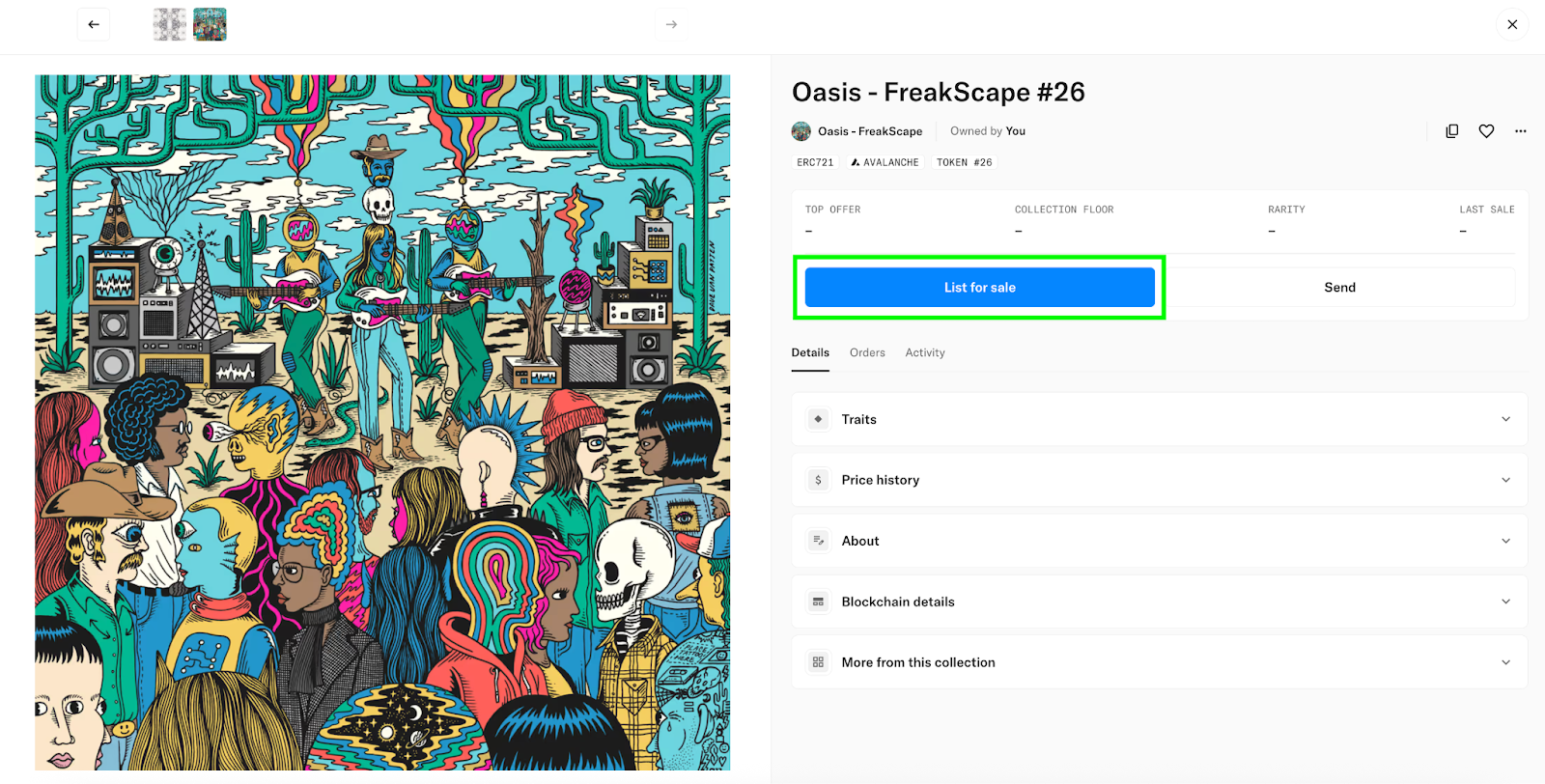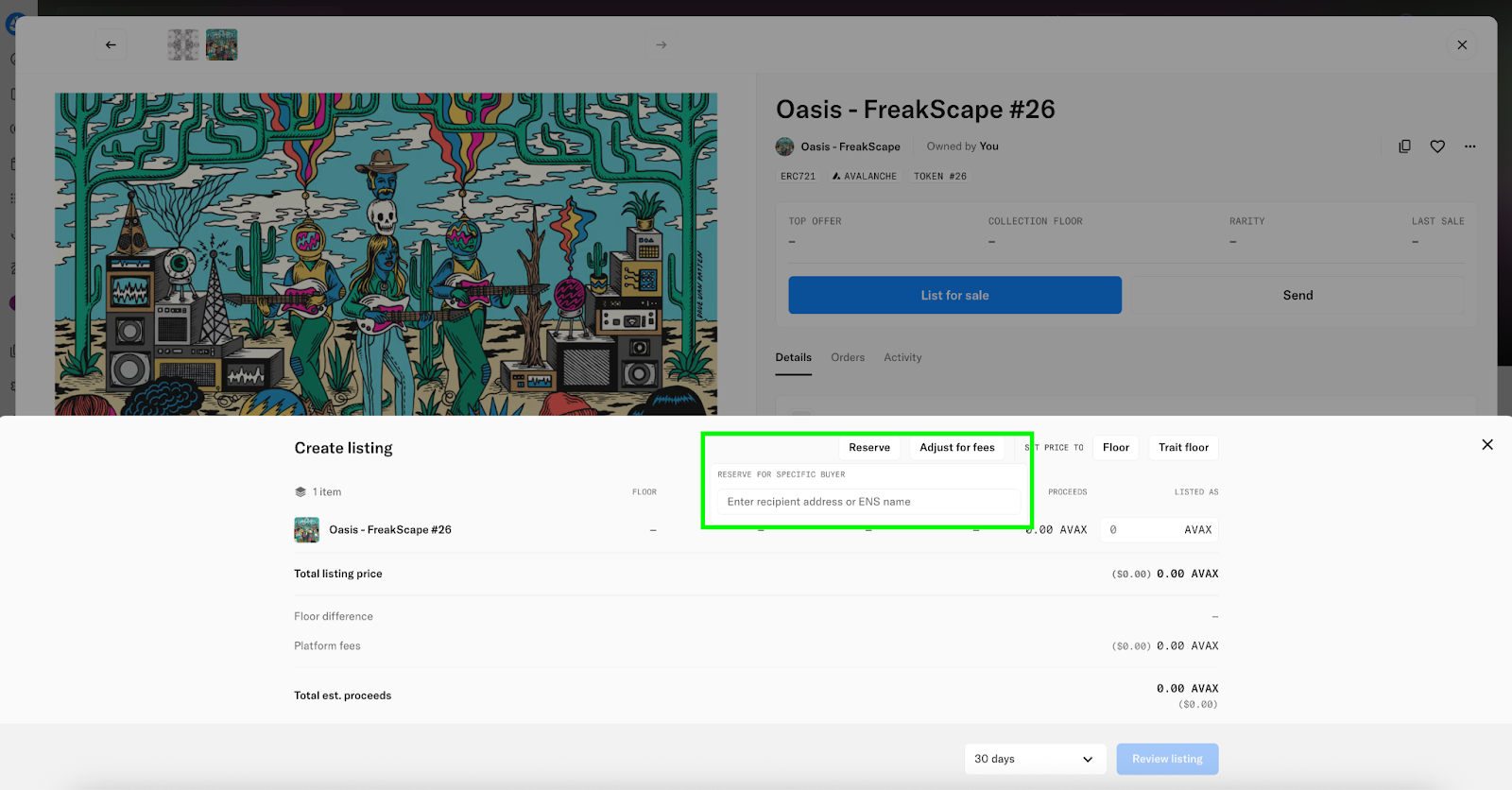
Selling an NFT using OpenSea is simple and user-friendly. Anyone who owns an NFT can list it for sale, whether that’s the creator of the NFT or the person who most recently collected it. Creators and collectors can sell NFTs using OpenSea via fixed price sale and offers.
What is an NFT?
An NFT (non-fungible token) is a unique digital item stored on a blockchain. NFTs can represent almost anything, and serve as a digital record of ownership.
To sell an NFT using OpenSea you’ll need a few things: an OpenSea account, a crypto wallet, and something really awesome to sell. It’s up to you to decide what that awesome thing will be.
Your NFT will typically consist of two things: a piece of media (like an image or video), and what that media represents. For example, 3D digital art that represents ownership of that art, interactive media that represents digital land you own, or an image of a card that represents membership to an exclusive club.
How do NFTs work?
NFTs operate on blockchain technology. The blockchain is basically a large, digital, public record. The most popular blockchains are distributed across many nodes (read: people’s computers), which is why you’ll hear them described as “decentralized.”
So instead of a central company-owned server, the blockchain is distributed across a peer-to-peer network. Because the blockchain records and preserves history, it is uniquely positioned to transform provable authenticity and digital ownership.
When someone creates, transfers, buys, sells, or otherwise does something with an NFT, these actions all occur on the blockchain. The blockchain both authenticates the transaction and creates an immutable record of it.
This record serves as a permanent statement of authenticity that can be viewed or accessed by anyone. Today, when you buy a piece of art or a collector's item, it typically comes with a paper certificate of authenticity, which you must then keep track of forever. It is easily forgotten, lost or destroyed, creating a very fragile system for authenticity. Blockchains offer a simple and more secure solution to this long-standing issue of proving authenticity.
What are NFTs used for?
An NFT can represent almost anything. Today, NFTs are being used in art, gaming, photography, music, domain names, memberships, and more.
New applications for the blockchain are constantly emerging. New use cases include identity verification, intellectual property, and storage solutions, like Courtyard, which holds physical inventory and enables you to safely hold, sell, or claim the item you’re ready to redeem. The possibilities for future applications are endless!
Who can sell an NFT?
Selling NFTs isn’t just for the people who create them. An NFT can also be sold by the collector who bought or received it from the original creator, or the collector who bought or received it from the previous collector, and so on and so on. Whoever currently owns the NFT can sell it.
Step 1: Choose a method for selling your NFT
There are a few methods you can use to sell your NFTs using OpenSea. You can sell your NFT for a fixed price and allow buyers to purchase it outright, or a buyer can make an offer to purchase your NFT.
Fixed price sales allow sellers to define exactly how much they want to sell the item for, and offers allow buyers to propose a price for NFTs (even if they aren’t listed for sale) that sellers can then choose to accept or ignore.
Who decides the payment tokens an NFT can be purchased with?
When a creator makes a collection using OpenSea, they decide which payment tokens can be used when selling items in that collection. On future sales (after the initial creator’s sale), the new seller can decide which of the creator-chosen tokens to list their NFT in. The buyer must use the token dictated by the seller when purchasing that NFT, or they can submit an offer in WETH.
Can someone make an offer on an NFT that’s not for sale?
Yes! Buyers can make an offer to buy NFTs even if they aren’t for sale, and sellers can choose to accept or ignore them. If you have your email connected to your OpenSea account, you’ll get an email notification that someone has made an offer on your item.
Step 2: List your NFT for sale using OpenSea
On OpenSea, navigate to the top right of the page and click your Profile icon. Select the NFT you would like to sell from your wallet.
On the right side of the item page, click List for sale.

In a Fixed Price sale, the seller establishes the NFT price.
Set a duration for the sale by using the dropdown at the bottom of the page.

Lastly, you can choose to reserve the item for a specific buyer. To do so, click Reserve and enter their wallet address into the field.

In all those options, you’ll see the potential fees from the sale listed at the bottom.
Step 3: Understand what fees are associated with selling an NFT using OpenSea
Any transaction, including sales, typically include gas fees and a marketplace fee. Buyers pay gas fees when purchasing a fixed-price item, and some transactions may also include creator earnings. Sellers pay gas fees when accepting offers. OpenSea typically charges a 1% fee to the seller of the NFTs, which is included in the price displayed to buyers.
Why should I sell my NFTs using OpenSea?
At OpenSea, we offer a variety of ways to keep costs to a minimum while facilitating the sale of your NFTs. The protocol for buying and selling NFTs using OpenSea, Seaport, significantly lowers gas fees. It also eliminates the one-time setup fee to use our marketplace. And because OpenSea is compatible with 22 blockchains, you have a wide range of options with varying gas fees to choose from. OpenSea is the leading NFT marketplace, and we’re proud to continue to offer users the best NFT buying and selling experience in web3.
🧠 Q&A
Before you set the fixed price or auction of your NFTs, research other similar projects to see what their floor prices are, connect with your community online, get a sense of the appetite for what you’re selling, and use other analytics tools to help guide you to finding the right price. OpenSea will also prompt you via pop up asking you to confirm if you create a listing far below the floor price. This can help you catch any misplaced decimals or an extra 0 you might have missed!
OpenRarity is a rarity protocol built by the NFT community for the NFT community. OpenRarity is a community-built project that aims to provide a transparent, mathematically sound rarity calculation that is entirely open-source and reproducible by anyone. The goal is to bring more transparency to a previously opaque and confusing space. OpenRarity is an open collaboration between Curio, icy.tools (QuickNode), OpenSea, PROOF and has been vetted with creator teams representing several top-100 collections by volume.
Almost anything! An NFT is a digital representation of something, whether that something is intellectual property, membership to a group or club, artwork that represents access to the metaverse, or something else!

Sign up for our newsletter
Join our newsletter to get web3 news, updates, interviews, and deep dives all in one place.


